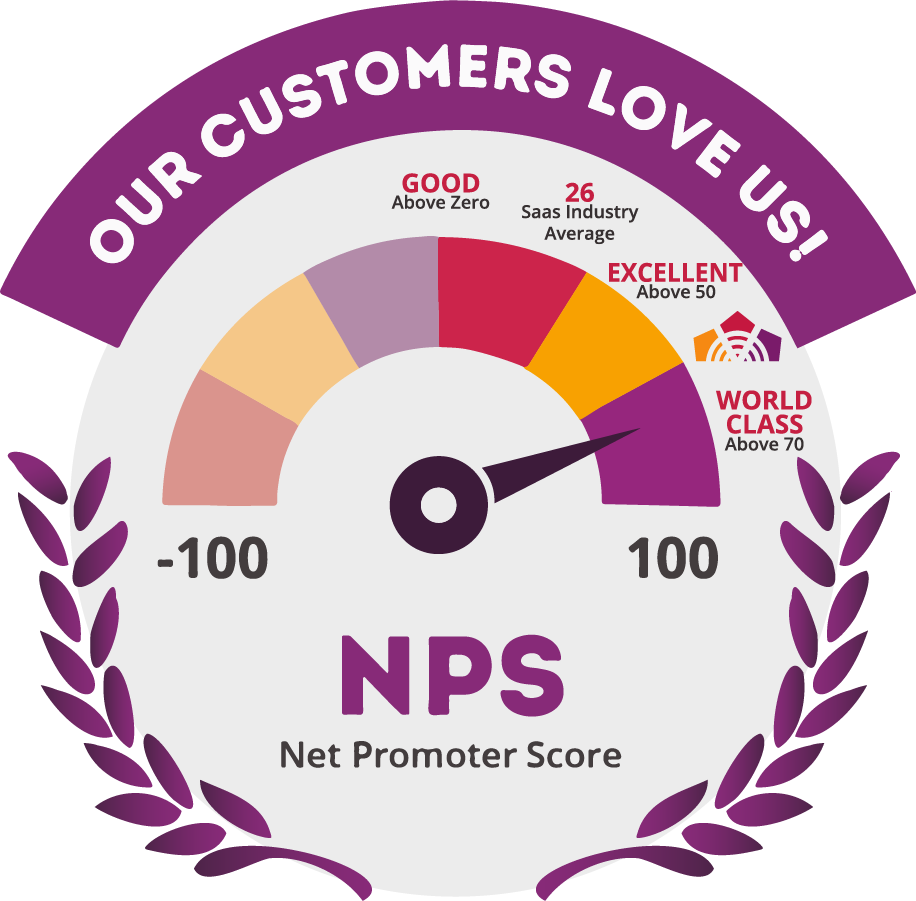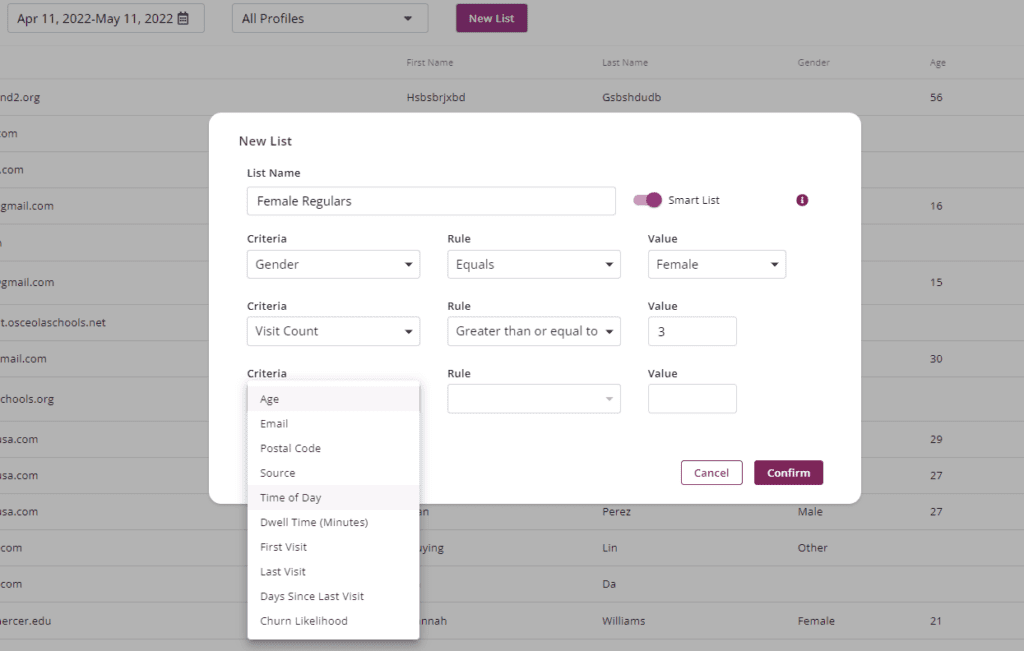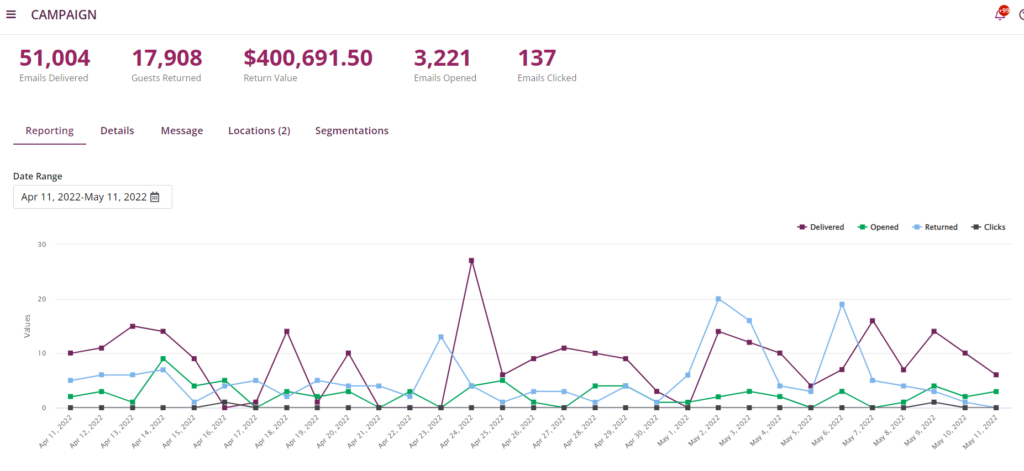Restaurant Customer Satisfaction
In a world where customers are always looking for the best deal, it is more important than ever for restaurants to focus on customer satisfaction.
Satisfied customers are more likely to return and recommend your restaurant to others, while unhappy customers can damage your reputation with just one review.
But what exactly is restaurant customer satisfaction? And how can you make sure your customers are happy?
Here’s a look at what you need to know about customer satisfaction and how to achieve it.

What is Customer Satisfaction?
Customer satisfaction is the degree to which a guest is happy with a product or service. In the restaurant industry, customer satisfaction can be affected by everything from the quality of the food to the speed of service.
Creating a culture of guest satisfaction starts with your employees. Train your staff to provide exceptional customer service and make sure they understand the importance of customer satisfaction.
In addition, regularly collect feedback from guests to get a sense of what they’re thinking and how they feel about your restaurant.
Measuring Restaurant Customer Satisfaction
 There are several ways to measure customer satisfaction, but one of the most common is the Net Promoter Score (NPS). To calculate your NPS, you simply ask guests how likely they are to recommend your restaurant to a friend or family member on a scale of 0-10.
There are several ways to measure customer satisfaction, but one of the most common is the Net Promoter Score (NPS). To calculate your NPS, you simply ask guests how likely they are to recommend your restaurant to a friend or family member on a scale of 0-10.
Based on their answer, guests are placed into one of three categories:
- Detractors (0-6): These are the guests who are unhappy with your restaurant and are unlikely to recommend it to others.
- Passives (7-8): These guests are satisfied with your restaurant but may be swayed by a competitor.
- Promoters (9-10): These guests are your biggest fans and are likely to recommend your restaurant to others.
To calculate your NPS, you take the percentage of promoters and subtract the percentage of detractors. For example, if 80% of guests are promoters and 20% are detractors, your NPS would be 60.
While the NPS is a good way to get a general sense of customer satisfaction, it’s also important to collect more detailed feedback from guests. This can be done through surveys, focus groups, or even simply talking to them in person.
Why is Customer Satisfaction So Important for Restaurants?
The importance of customer satisfaction cannot be overstated. Happy guests are more likely to return and spend more money at your restaurant, while unhappy guests can quickly damage your reputation.
In addition, satisfied guests are more likely to recommend your restaurant to others. In fact, word-of-mouth is one of the most effective forms of marketing. According to Nielsen, 92% of consumers believe suggestions from friends and family over all other forms of advertising.
Finally, happy guests can also help you attract new customers. In today’s world, online reviews are more important than ever. Sites like Yelp and Google can make or break a restaurant, so it’s crucial to make sure your guests are satisfied.
Remember that the importance of customer satisfaction does not discriminate. It can make or break the success of any restaurant, regardless of its size, location, demographics, or even the quality of the cuisine.
However, restaurant owners can find it increasingly difficult to identify the major contributing factors to customer satisfaction, especially when they disagree with what guests feel that they need.
It’s not about what restaurants need to feel satisfied, it’s about what guests feel restaurants need to do to satisfy them. It’s important not to inconvenience guests at the restaurant’s convenience.
The more satisfied guests are, the more likely they are to spend more, visit repetitively, share their positive experiences, and recommend restaurants to friends, families, and strangers online.

Telling Statistics of Guest Satisfaction
There are a variety of reasons that restaurant guest satisfaction is important, but let’s sum it up to these powerful statistics:
- 7 out of 10 U.S. consumers say they’ve spent more money to do business with a company that delivers great service. (American Express)
- A moderate increase in customer experience generates an average revenue increase of $823 million over three years for a company with $1 billion in annual revenues. (Temkin Group)
- A Harvard Business School researcher found that a one-star increase in a restaurant’s Yelp rating correlated with a 5-9% increase in revenue.
- 25 percent more people turn to consumer reviews on sites like OpenTable, Yelp, and TripAdvisor than those who rely on reviews by professional food critics. 60 percent read reviews before going out for a meal, a habit that takes precedence over getting directions to a restaurant or looking at food photos. (OpenTable)
- Diners say that complimentary extras (69 percent) and seating preferences (65 percent) would go far in increasing customer loyalty. (OpenTable)
- 75 percent of consumers will not visit or patronize a restaurant with negative reviews about its cleanliness. (Harris Poll for Cintas Corporation)
- 38% of all customer complaints are on social media and review sites. Restaurants get only 14% of all complaints. (Jay Baer, Food Service Magazine)
- After one negative experience, 51% of customers will never do business with that company again. (New Voice Media)
These statistics underline the importance of satisfying every guest who comes to your place of business or orders online. Here are some powerful ways to keep them satisfied and coming back for more.
Ways to Improve Restaurant Customer Satisfaction
When it comes to the restaurant industry, keeping your guests happy is key to success. In fact, a recent study found that a 1-point increase in guest satisfaction scores can translate into a 3-5% increase in profits.
So what can you do to ensure your guests are satisfied? Here are a few tips:
1) Make sure your restaurant menu is easy to navigate and offers something for everyone.
If you want to keep your guests happy, it’s important to make sure your restaurant menu is easy to navigate and offers something for everyone.
This means ensuring that there are plenty of options for different dietary needs, as well as varying tastes and budgets. It also means keeping the menu layout simple and organized, so guests can quickly find what they’re looking for.
One way to make sure your menu is customer-friendly is to offer a variety of choices. This means having options for different dietary needs, as well as different taste preferences.
For example, if you’re a vegan restaurant, it’s important to make sure you have plenty of vegan-friendly options. If you’re a pizzeria, you should offer a variety of pizza toppings so that everyone can find something they like.
It’s also important to keep your menu layout simple and organized. Focus on making it easy for guests to find what they’re looking for.
By offering a customer-friendly menu, you can help ensure that your guests have a positive dining experience and keep coming back for more. Oracle’s GloriaFood offers an online restaurant menu that is free of charge.
2) Keep your dining area clean and clutter-free.
No one wants to eat in a dirty restaurant. Not only is it unappetizing, but it can also be dangerous.
A cluttered dining area can also be a hazard, as people can easily trip over wires or cables.
Make sure your dining area is clean and clutter-free so that your guests will feel comfortable and safe while they’re eating.
 3) Train your staff to be friendly and attentive.
3) Train your staff to be friendly and attentive.
No matter how good your food is, if your staff members are unfriendly and unhelpful, you’re going to lose customers.
It’s important to train your staff on the basics of customer service so that they can provide a positive experience for every patron who walks through your door.
This includes being friendly and attentive, as well as helping guests navigate your menu and answering any questions they may have.
4) Offer prompt and consistent service.
To provide prompt and consistent service, it is important that your waitstaff be well-trained and knowledgeable about the menu.
They should also be familiar with the restaurant’s policies and procedures so that they can effectively deal with any situation that may arise.
In addition, it is essential to have a system in place for taking orders, delivering food, and collecting payments so that everything runs smoothly.
By following these tips, you can ensure that your customers are happy with the service they receive.
5) Use quality ingredients in your recipes.
Cooking with quality ingredients is important for a few reasons. First, it ensures that your food will taste great.
Second, it shows your guests that you care about their experience and are willing to put in the extra effort to make sure they have a good meal.
Finally, it sends the message that you take your cooking seriously and are committed to providing a high-quality dining experience for your guests.
6) Price your items fairly.
When pricing your menu items, you want to make sure that you are fair to both your customers and your business. You don’t want to charge too much, lest you scare customers away, but you also need to make a profit.
7) Reward loyal guests with discounts or special offers.
Loyalty programs are a great way to show your customers that you appreciate their business.
By offering special rewards and discounts, you can encourage customers to keep coming back and make them feel appreciated.
This can lead to increased customer loyalty and better word-of-mouth advertising for your business.
Other areas to improve for better guest satisfaction.
- Updated interior design: A restaurant’s physical environment will immediately evoke positive or negative feelings about a restaurant’s brand.
- Ambient light: While rarely mentioned, ambient lighting that is too bright or too dark has a high likelihood of becoming a deterrent and a silent brand detractor
- Colors: The colors of a restaurant will immediately and subconsciously showcase the quality of a brand. They also evoke specific feelings. For example, red and yellow stimulate appetites, and blue decreases appetites but increases feelings of calmness and comfort. Blue creates the appearance that time passes quickly. Red restaurants create the appearance that time passes by slower for guests.
- Music: Multiple studies show that music has a direct impact on the amount the guests spend when visiting restaurants. Music should match a brand’s image. Slow music increases a guest’s willingness to spend more money, while faster music can contribute to more alcoholic beverage sales and create a more casual environment.
- Background noises: Restaurants should have a medium sound level. Guests in quiet restaurants spend more money and eat more of their food. But they can also contribute the low sound levels to a low-quality restaurant with high-cost food. Guests in noisy restaurants both spend and eat less. So, if traffic is high it’s important to have interior soundproofing present.
- Aesthetics: Not only do guests prefer a positive overall brand interior appearance, but attractive restaurants are also an additional social media marketing tool.
By following these tips, you can create a customer-centric restaurant that is sure to please.
And remember, satisfied guests equals increased profits. So it’s definitely worth your while to invest in customer satisfaction!
What Contributes to Poor Customer Satisfaction?
We recently put together a great article on the contributing factors of poor customer service and satisfaction. You can find it here.
To summarize, they include:
- Neglecting the fundamentals of running a business
- Misunderstanding what your guests want and need
- Lack of cleanliness
- Non-versatile menu options
- Underestimating the power of unhappy guests
- Not creating enough reasons for guests to come back (loyalty programs)
- Poor food quality
- Lack of brand consistency
- No Incentives/Poor Incentives
- Slow WiFi
- Poor customer service
- Bad environment
- If a location is outdated, amplifies sound too much, has music that is too loud, or has no music at all, consumers classify it as a bad environment.
- These are the top factors to improve a restaurant’s environment:
- Unreasonable pricing
- Lack of future planning
- No competitive differentiation
- Poor location
Analyzing Guest Behavior for Satisfaction
Knowing how your guests are behaving is key to engaging them and keeping them satisfied. But how do you collect this data?
The secret to capturing this data is through a captive portal that works through your existing WiFi service. If you’ve already provided free WiFi to your guests, you can turn this into a symbiotic process.
A captive portal is simply the page that a guest is directed to when logging into your WiFi. There are many things you can do when developing a captive portal. You’ll find several examples here.
You can build customer profiles, onboard guest data onto third-party applications, and automate your marketing campaigns quickly and easily.
Once you begin collecting guest data, you might find some surprises about how your loyal patrons typically behave. Then you can adjust marketing and operations procedures to optimize your business over time.
You will see things like guest dwell times, popular days and times, age and gender distribution, guest repeat rates, postal codes, birthdates, and more.
Then, you create specific guest lists to send targeted marketing messages based on behavior and demographic data. This is known as customer segmentation and can provide a much higher ROI on your marketing efforts.
Customer Data Platform Insights Can Help Improve Satisfaction
Another great way to improve restaurant customer satisfaction is to keep your guests engaged with your marketing. Customer segmentation and personalization of your marketing messages is crucial in today’s competitive marketplace.
Segmentation refers to using guest data to create much more effective email content because it can be tailored for each individual or each customer persona.
Using personalized messaging has been proven to improve open rates and generate more revenue because it allows restaurant marketing professionals to create more relevant content that will more effectively pique the interest of the consumer. This leads to better overall trust and satisfaction.
By collecting guest data and grouping those guests into separate lists, marketers can focus on sending highly targeted messages to each customer segment, increasing open rates, and encouraging more engagement.

How to Collect Individual Customer Data
To execute an effective and engaging marketing campaign, you’ll need to have comprehensive data about your individual guests.
There are various ways in which to collect guest data, but most are either expensive or take a great deal of time and energy. The only efficient way to gather enough comprehensive, verified data to effectively create a personalized campaign is to use a quality customer data platform.
It will allow you to passively gather the necessary individual guest information through your website, your on-site WiFi, your online ordering system, and other means. Then you can use the data to create targeted, segmented marketing messages.
The platform also tracks the physical behavior of your guests, logging things such as dwell times, repeat visits, coupon redemption, days of the week, and hours of the day they have visited.
With this kind of thorough and reliable data, marketers can begin using it to build powerful, data-driven targeted restaurant marketing campaigns to engage and further solidify guest satisfaction.
Using Data to Build Engaging Marketing Messages
According to research from Salesforce, the world’s #1 customer relationship management platform, data targeting and segmenting were used 51% more by over-performing businesses than those who were underperforming.
This makes perfect sense when thinking about today’s consumers. They expect personalized messaging and they quickly sniff out when they’re receiving a simple generic mass-marketing message.
The simplest way to get started creating segmented and personalized campaigns is to make your customer profile data filterable.
This will allow you to start building segments of specific guests based on their demographics and behavior data.
Using these tools, marketers will have the guest information necessary to create targeted and personalized marketing campaigns. This will give you the upper hand over your competition when rebuilding your revenue stream before, during, and after challenging times.
Likewise, you will be able to see the results of online and offline campaigns to measure ROI and optimize over time.

Marketing Attribution and Examples
Accurate marketing attribution for restaurants, or any brick-and-mortar business, has always been a thorn in the side of marketing professionals. However, in today’s competitive environment, it is absolutely necessary.
In fact, adding attribution to your restaurant marketing strategy can improve your results tremendously. According to Gartner, the typical outcome of implementing attribution is a 20-30% gain in media efficiency and corresponding increases in ROI.
What is Marketing Attribution?
Marketing attribution is the marketing term used for applying credit to individual marketing tactics and messaging and attributing ROI to them. When done correctly, it allows marketers to apply more focus on tactics and messaging that are working well, and less focus on those that aren’t.
The main ingredient for effective, proper marketing attribution is accurate, comprehensive data.
Traditionally, this type of data was difficult and expensive to acquire. And it was simply a snapshot in time. In other words, if you wanted updated data, you would have to pay for it over and over.
Fortunately, today’s technology has eliminated this difficult challenge.
Using a restaurant customer data platform like Bloom Intelligence, marketers will have the ability to see the most accurate and reliable guest data available today to measure customer sentiment and satisfaction.
As soon as you install the platform, you will begin seeing data updated in real time. You’ll see things like daily/hourly visitors, repeat visitors, dwell times, popular visit times and so much more.
If a guest logs in to your WiFi, they are taken to a WiFi landing page, or captive portal. This page requires the user to enter information such as their name and email address before accessing the internet. At this point, the platform will create a customer profile for the patron and all of their previous and future data will be added to the profile.
How Does WiFi Marketing Attribution Work?
Now that you have the guest’s contact information, you can begin marketing to them. And you don’t have to send mass-marketing messages to your entire database. As discussed above, you can segment your database based on customer demographics and their online and offline behavior.
For instance, you can create a marketing campaign for women under 40 who visit your store on Sundays. Or, you can send a targeted message to men between 21 and 30 years old who have ordered online more than 3 times.
And since the platform will recognize when a guest comes back or orders online, marketing attribution on these campaigns becomes extremely easy.
With Bloom, you’ll be able to see who received a marketing message, who opened it, who came back to your location or ordered online, and whether or not they redeemed any offer that you attached to the message.
This is data that restaurant owners and operators haven’t had access to before. And its cost is pennies on the dollar compared to traditional market research solutions.

Let’s take a look at a couple of examples of WiFi marketing attribution.
Attribution Example 1
In this example, we will assume that you are finding your guest dwell times and online ordering are decreasing and you want them to increase. You create an email that you will send to your entire database. The email will contain an offer for a free dessert or 50% off an appetizer.
You send out the email and wait for the results.
A few days later, patrons begin redeeming the offer in your store or online. With Bloom Intelligence, you are not simply counting how many guests redeemed the offer. You will be able to see an accurate picture of how many people returned, even if they did not redeem the offer. Plus, you’ll be able to see accurate dwell time and online ordering measurements.
If the KPIs increase, then you can attribute this to your marketing campaign. You can then make an intelligent, data-driven decision around the ROI of the campaign and decide if you would like to continue, make changes to, or eliminate the campaign.
Attribution Example 2
With Bloom Intelligence, you have the ability to ask your guests their birthday. So you and your marketing team decide that you’d like to help increase guest loyalty by executing a “free meal on your birthday” campaign.
You create an email that you will send to anyone in your customer database who has entered their birthday. The email will be sent a few days prior so they can make plans to come to your place of business or order online. The email will also contain a redemption code.
From that moment on, you will be able to see how many people received the offer, how many viewed the offer, how many returned on their birthday or ordered online, and how many redeemed the offer. Over time you can attribute ROI to the campaign and decide whether to keep it running, make changes to it, or eliminate it altogether.
Ongoing Testing and Optimization
 Now that you have your guest segments properly defined, and you have an idea of the marketing messages and promotions you want to send to them, it’s time to get started.
Now that you have your guest segments properly defined, and you have an idea of the marketing messages and promotions you want to send to them, it’s time to get started.
When you create and send your marketing message to each list, it is vital that you monitor the ROI of each campaign and measure sentiment to confirm more restaurant customer satisfaction.
As initial results come in, analyze the results and keep them documented in your platform.
The next time you send a message to each group, you’ll want to make a small change to the message.
You should only make a single change to the message while testing. Send the message and compare its results to the original message.
If the results are not as good as the original, go back to your original message and test a different aspect of the message.
If the results are better, keep the change and continue testing and optimizing over time. This is known as A/B testing.
Side note: don’t forget that you’re not just targeting current guests. You should also be seeking out new lookalike prospects online and targeting them in an effective manner using the data you’ve collected. These prospects should have a higher probability of becoming new guests, providing a more cost-effective means of acquiring new customers.
Of course, none of this will be as effective if you have no way to accurately measure the results of your efforts.
You need to make sure that the solution you’re using provides detailed and comprehensive reporting features, and the ability to track testing campaigns, as well as overall and individual guest satisfaction.
It can be tempting to use your own intuition to predict what will improve your restaurant’s customer satisfaction, but it’s vital to understand that guest perceptions, experiences, and likes/dislikes are limitless.
Basing marketing decisions on one person’s “feelings” can be detrimental to your business.
All of this will allow you to optimize your marketing messages based on accurate, tangible data, and strive for continuous improvement of guest engagement and satisfaction. If you’re not measuring your marketing campaigns and ROI at this level of detail, you will not know for sure if what you are doing is helping or hurting your business.
You want to continuously test your marketing messages. Without testing, you’re always leaving potential revenue on the table. Just make sure that the tools you are using can give you the accurate reports and KPIs required to determine which messages are engaging your guests better than others.
And always allow plenty of time to give yourself a large enough sample size to confidently determine your winners – the more, the better.
Bloom Intelligence Restaurant Guest Data Platform
Bloom Intelligence gives you the ability to track the results of every campaign you create – all the way down to a guest returning to your place of business and/or redeeming an offer. Bloom’s WiFi analytics detect the device of any consumer who walks back into your location that received one of your offers, messages, or surveys.
To learn more about the ways the Bloom Intelligence growth tools can help you improve your restaurant marketing to drive more sales, improve overall customer experience, measure customer sentiment, and grow your business, schedule a free demo today.
To see more of what Bloom can do for your restaurant or coffee shop marketing, schedule a free demo today, or call us at 727-877-8181.






.svg)